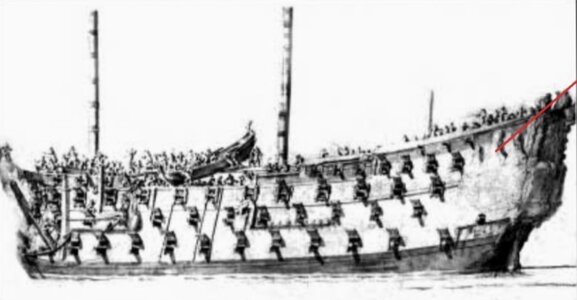Thank you, Maarten! We’ll just have to see how many lives this cat has in him 
-
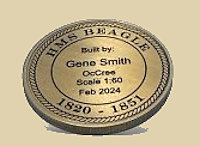
Win a Free Custom Engraved Brass Coin!!!
As a way to introduce our brass coins to the community, we will raffle off a free coin during the month of August. Follow link ABOVE for instructions for entering.
You are using an out of date browser. It may not display this or other websites correctly.
You should upgrade or use an alternative browser.
You should upgrade or use an alternative browser.
Soleil Royal by Heller - an Extensive Modification and Partial Scratch-Build by Hubac’s Historian
- Thread starter Hubac’s Historian
- Start date
- Watchers 80
-
- Tags
- 1689 heller hubac refit soleil royal
Speaking to your proposal, Maarten - if I were to attempt a ship from SOTS’s time, I think I would be inclined to do the Sophia Amalia:
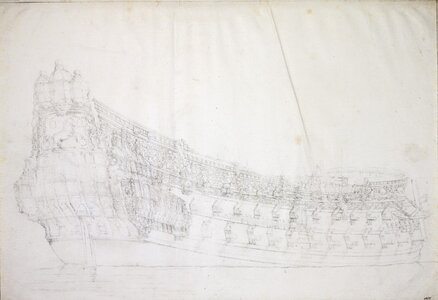
A few really excellent models of her exist, but this is probably the best among them. Note the vivid color scheme:
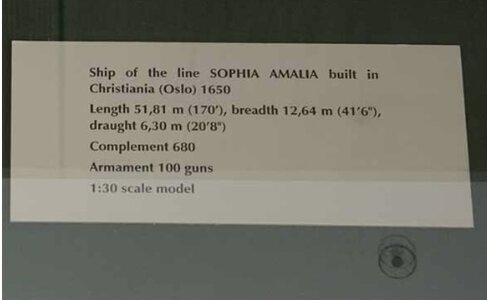
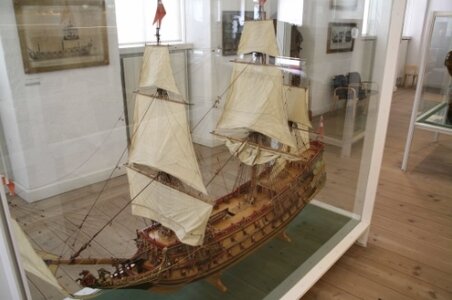
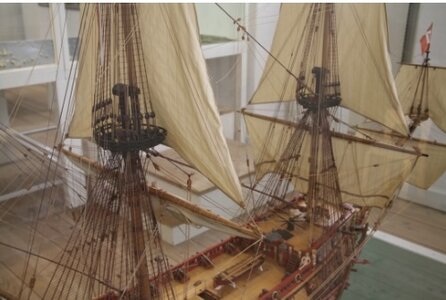
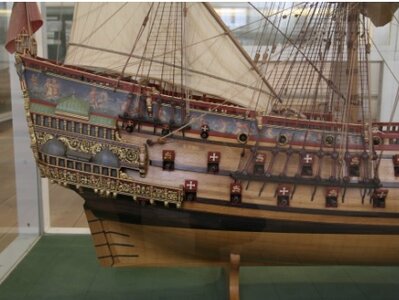
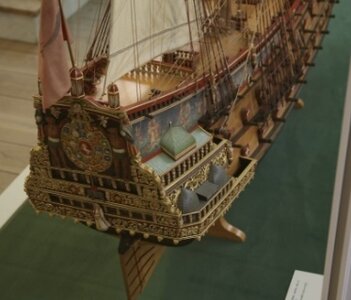
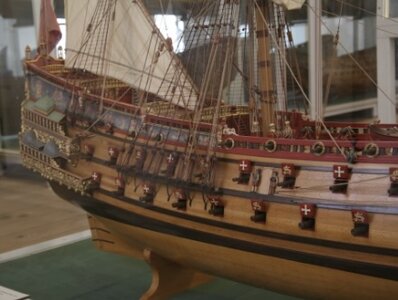
I have many more images of this model, but the image uploader is being extremely selective about what gets past the door. I think it was probably easier to get into Studio54, back in the days!

A few really excellent models of her exist, but this is probably the best among them. Note the vivid color scheme:






I have many more images of this model, but the image uploader is being extremely selective about what gets past the door. I think it was probably easier to get into Studio54, back in the days!
Of both ships there are Van de Velde drawings.
Guess the one you showed was the first SotS rebuild with still the old style galleries. The most interesting on that drawing is the split level of the second gun deck which is heavily debated on msw. In both early Van de Velde drawings you see this split level second gun deck.
After the second rebuild you see these new galleries but still the same upper and lower stern and a round tuck.
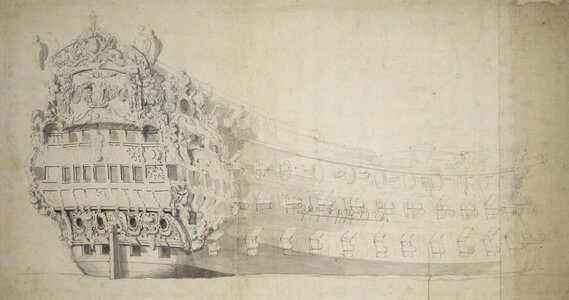
And sophia amalia
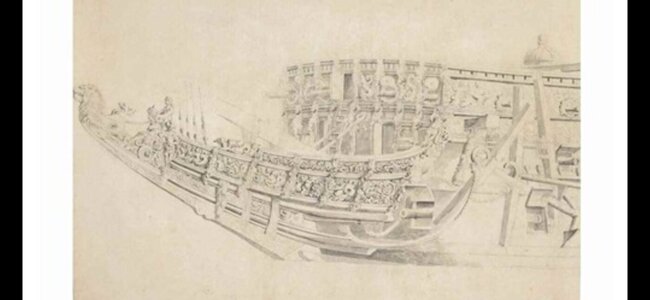
Guess the one you showed was the first SotS rebuild with still the old style galleries. The most interesting on that drawing is the split level of the second gun deck which is heavily debated on msw. In both early Van de Velde drawings you see this split level second gun deck.
After the second rebuild you see these new galleries but still the same upper and lower stern and a round tuck.

And sophia amalia

Last edited:
OK. You guys are clearly (intentionally) pushing all my 'what if' buttons. I happen to love the Sophia Amalia. My next build will be a POF so I can learn how that construction progresses. But then? A POB scratch build? Sophia Amalia? I've not yet dared to begin the research...but are there plans?
Paul, first your POF. During that build so many new things will pass that you will change your ideas for a future build another 10 times. Then you have multiple monographs on your table and research for another few builds.OK. You guys are clearly (intentionally) pushing all my 'what if' buttons. I happen to love the Sophia Amalia. My next build will be a POF so I can learn how that construction progresses. But then? A POB scratch build? Sophia Amalia? I've not yet dared to begin the research...but are there plans?
Welcome to the world of shipmodelling. There are always more models to build then years of live to build them all
Have you looked into Riksapplet? A swedish warship build be an English shipwright late 17th century. Recently there is a lot of study on the well preseved wreck site of Riksapplet. This one is for sure on my list.
There is a wreck.
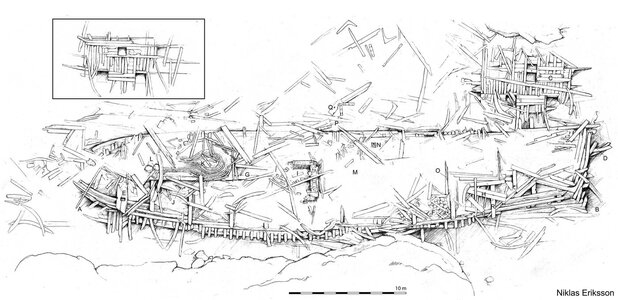
There is study material
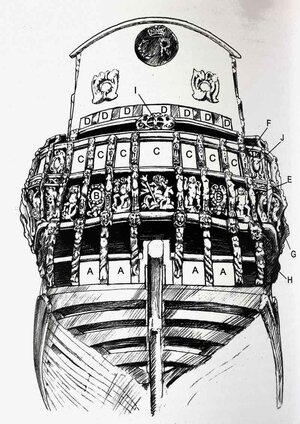
There is even a contempory navy board model.
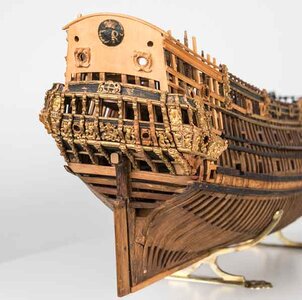
Sorry for hacking your blog marc.
Apologies are not necessary - these Baltic wrecks are always fascinating to me.
Yesterday, I took a brief break from painting the apartment to stop by the STRAND. There I found an earlier (1963) hardbound edition of the R.C. and Romola Anderson book:
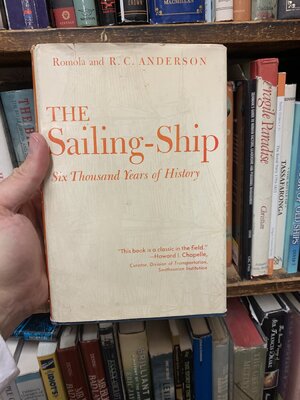
Inside, there was a slightly cleaner print of the Gilded Ghost portrait:
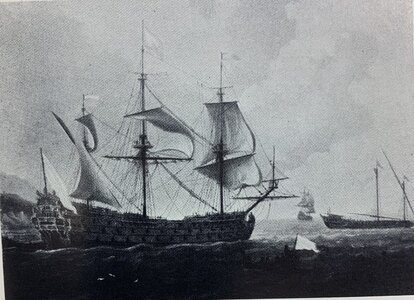
As compared with the more recent paperback edition, where I first saw the portrait:
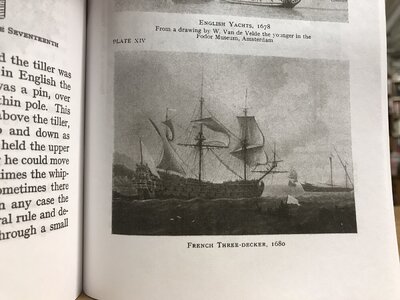
The image is still fairly inscrutable, but hopefully someday I will find the painting.
Apart from carving the starboard headrail horse medallion, not much is happening on the model, and I’m afraid there won’t be until October.
Until then, be well and thank you for looking-in.
Best,
Marc

Inside, there was a slightly cleaner print of the Gilded Ghost portrait:

As compared with the more recent paperback edition, where I first saw the portrait:

The image is still fairly inscrutable, but hopefully someday I will find the painting.
Apart from carving the starboard headrail horse medallion, not much is happening on the model, and I’m afraid there won’t be until October.
Until then, be well and thank you for looking-in.
Best,
Marc
Is there nothing written in the Annex? under "Plate XIV"
The only thing written is the same as captioned under the picture, unfortunately. No portrait attribution or collection or location mentioned. I thought an earlier edition might include this information, but alas, no.
Well, this came out well:
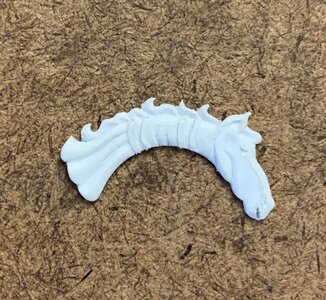
It only took a couple weeks of intermittent effort. Time to glue it to the starboard headrails:
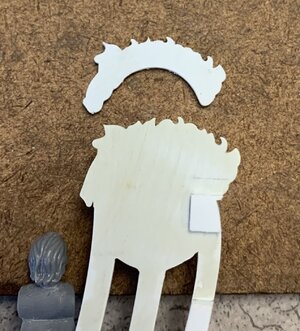
OH
 . Oh, well, I guess I’ll have to re-do that one. Silly mistake; sure it’s the starboard headrail, but I actually needed the port horse print for the inside carving. Not a big deal, though.
. Oh, well, I guess I’ll have to re-do that one. Silly mistake; sure it’s the starboard headrail, but I actually needed the port horse print for the inside carving. Not a big deal, though.

It only took a couple weeks of intermittent effort. Time to glue it to the starboard headrails:

OH

Very nice carving Marc,will it not work on the inside of the port headrail?
It would, but I already completed that one. I appreciate the thought, though.
The past month has been quite a ride; painting, packing, moving, start of school for kids, COVID for my wife, sick kids, unpacking, and an un-provoked subway assault (I got lucky, ‘am fine, but I had a really sore jaw for a week, case pending) - after all of that, I kind of lost my mojo for the project. The ship has just been sitting, locked up in its travel box, and waiting while we configure this new place.
Last night, I took the ship out to retrieve the starboard headrail. Very slowly, I did manage to remake that horse carving, so today, I flushed-up all of the edges and finished that aspect of the project:
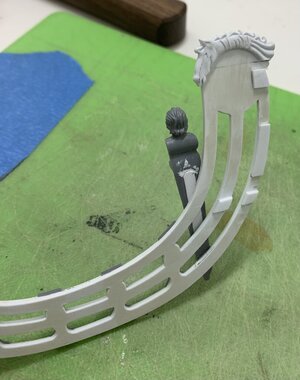
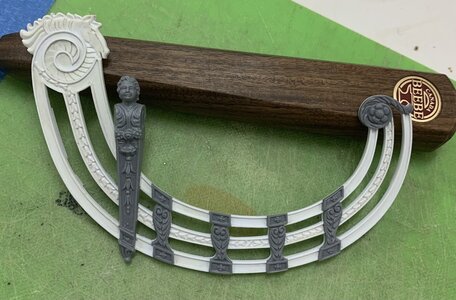
Weeks ago, when I was trying to tuck this headrail in, behind the figurehead, I was a little overzealous and removed too much material at the wrong angle. I added back a little plastic, here, to make a good joint:
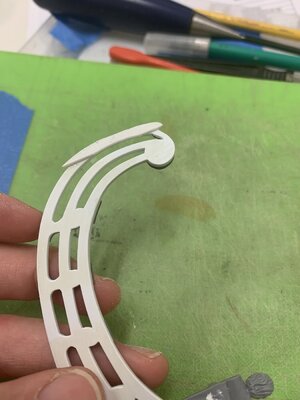
What has lit a little fire in me is the awareness that the 40th Annual Joint Clubs Meeting isn’t that far away. My home club, The ShipCraft Guild of New York, is hosting and we are in the planning stages with the hope of putting on a really good show, in this anniversary year.
And, so, I have set goals for the project before the show. I would like to have the entire head structure assembled and painted with all accompanying ornament. I would also like to have the third balcony tier, in-place. If I really get moving again, perhaps it is possible that I will have at least the outline of the tafferal in-place.
As I would like to construct cambered head-gratings, it is fortuitous timing that Chuck Passaro happens to be designing that structure for his Winchelsea group build right now. His sequencing of assembly has helped me to clarify my own modified approach to building this structure, and I will soon get started on making that happen.
On a tangentially related note: I am always on the look-out for 17th Century drawings and I recently discovered very clear images of the sets for this Swedish ship, The Kronan:
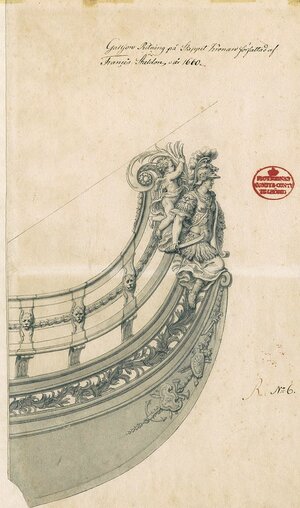
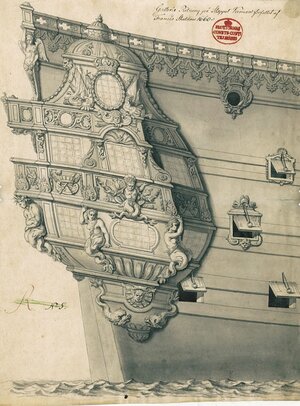
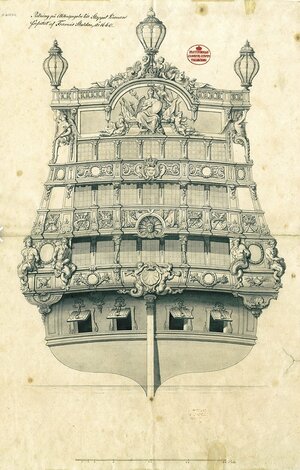
There are so many interesting things about this set. One can see that this is a Swedish ship because the Royal coat of arms with three crowns (as opposed to fleurs) is centered on the upper balcony rail.
Each drawing is inscribed in Swedish and translates to:
“Drawing of the ship Kronan written by Francis Sheldon 1660s”
Now, it is true that Francis Sheldon was contracted by Sweden to construct this huge three-decker for their expanding navy, in the late 1660’s. The Baltic remains of the ship still bear witness to the heavy English influence of Sheldon upon her architecture.
This ornamental set, however, has absolutely nothing in-common with English design or ornamental practice. In fact, apart from the coat of arms, everything about these drawings is distinctly French and very specifically the hand of Jean Berain.
Consider the following sets for Le Fleuron and Le Terrible:
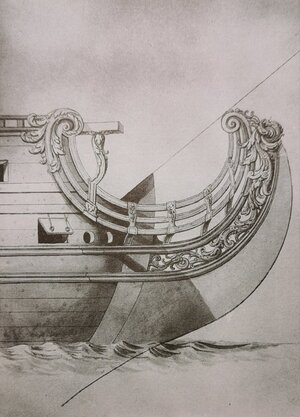
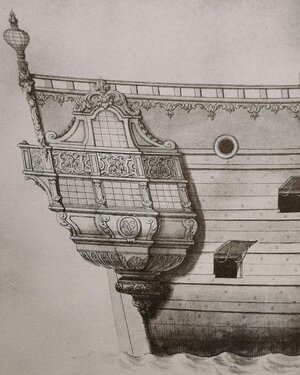
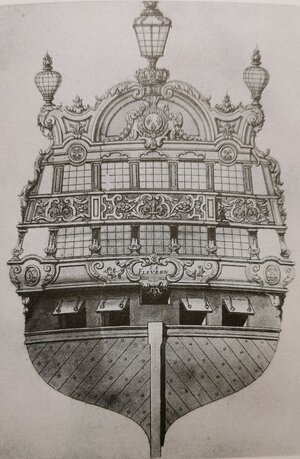
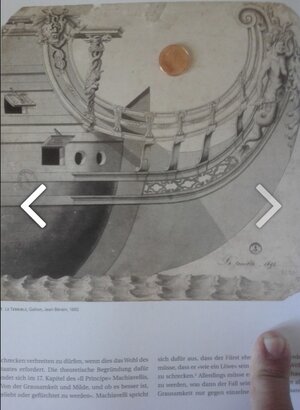
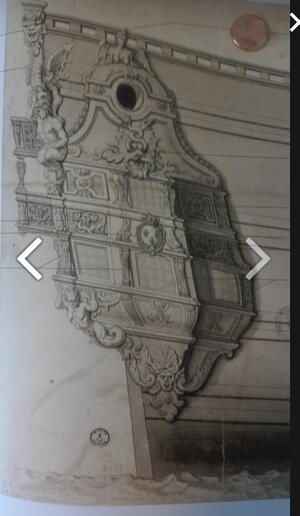
And so, it is curious that these drawings would be marked as the hand of Sheldon, when at least one near contemporary portrait of the Battle of Oland, paints a very different picture of the Kronan, at the moment of her loss in 1676:
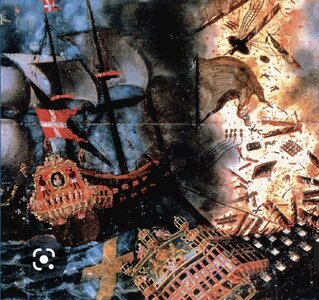
It makes more sense that the Kronan would have had a round-tuck stern, and that her side galleries may have been more similar, in structure, to the Sovereign of the Seas.
My guess is that, perhaps, the Swedish crown had plans to build a second Kronan in the 1690s, and had contracted Berain to produce an ornamental proposal. As far as I can find, though, the original Sheldon Kronan of 1672 is the only Swedish ship to carry the name in the 17th C.
Anyway, it is all interesting to look at, and to consider that Berain may have been reviving the twist-tail tritons of Puget’s style, later in the century.
Last night, I took the ship out to retrieve the starboard headrail. Very slowly, I did manage to remake that horse carving, so today, I flushed-up all of the edges and finished that aspect of the project:


Weeks ago, when I was trying to tuck this headrail in, behind the figurehead, I was a little overzealous and removed too much material at the wrong angle. I added back a little plastic, here, to make a good joint:

What has lit a little fire in me is the awareness that the 40th Annual Joint Clubs Meeting isn’t that far away. My home club, The ShipCraft Guild of New York, is hosting and we are in the planning stages with the hope of putting on a really good show, in this anniversary year.
And, so, I have set goals for the project before the show. I would like to have the entire head structure assembled and painted with all accompanying ornament. I would also like to have the third balcony tier, in-place. If I really get moving again, perhaps it is possible that I will have at least the outline of the tafferal in-place.
As I would like to construct cambered head-gratings, it is fortuitous timing that Chuck Passaro happens to be designing that structure for his Winchelsea group build right now. His sequencing of assembly has helped me to clarify my own modified approach to building this structure, and I will soon get started on making that happen.
On a tangentially related note: I am always on the look-out for 17th Century drawings and I recently discovered very clear images of the sets for this Swedish ship, The Kronan:



There are so many interesting things about this set. One can see that this is a Swedish ship because the Royal coat of arms with three crowns (as opposed to fleurs) is centered on the upper balcony rail.
Each drawing is inscribed in Swedish and translates to:
“Drawing of the ship Kronan written by Francis Sheldon 1660s”
Now, it is true that Francis Sheldon was contracted by Sweden to construct this huge three-decker for their expanding navy, in the late 1660’s. The Baltic remains of the ship still bear witness to the heavy English influence of Sheldon upon her architecture.
This ornamental set, however, has absolutely nothing in-common with English design or ornamental practice. In fact, apart from the coat of arms, everything about these drawings is distinctly French and very specifically the hand of Jean Berain.
Consider the following sets for Le Fleuron and Le Terrible:





And so, it is curious that these drawings would be marked as the hand of Sheldon, when at least one near contemporary portrait of the Battle of Oland, paints a very different picture of the Kronan, at the moment of her loss in 1676:

It makes more sense that the Kronan would have had a round-tuck stern, and that her side galleries may have been more similar, in structure, to the Sovereign of the Seas.
My guess is that, perhaps, the Swedish crown had plans to build a second Kronan in the 1690s, and had contracted Berain to produce an ornamental proposal. As far as I can find, though, the original Sheldon Kronan of 1672 is the only Swedish ship to carry the name in the 17th C.
Anyway, it is all interesting to look at, and to consider that Berain may have been reviving the twist-tail tritons of Puget’s style, later in the century.
Last edited:
Once again it is great to see your wonderful work Marc,
I am sorry to hear you were assaulted while in the subway, that is terrible.
Cheers,
Stephen.
I am sorry to hear you were assaulted while in the subway, that is terrible.
Cheers,
Stephen.
So sorry to hear of your troubles Marc, I think I would have lost my mojo after all that.
Assault and robberies are far too commonplace these days both sides of the pond in the big cities.
Glad to hear that you got away with a sore jaw and also have regained your mojo and set yourself some personal goals to help you move on from the experience
Yes, the Swedish vessel looks very French and I would have said it was if you had not pointed it out.Many ornamentation details that are typically French of this period
Kind Regards
Nigel
Assault and robberies are far too commonplace these days both sides of the pond in the big cities.
Glad to hear that you got away with a sore jaw and also have regained your mojo and set yourself some personal goals to help you move on from the experience
Yes, the Swedish vessel looks very French and I would have said it was if you had not pointed it out.Many ornamentation details that are typically French of this period
Kind Regards
Nigel
Thank you, guys! Sadly, there’s a lot of anger running around out there. I am grateful that my young son was not with me that day; he decided, last-minute, to go to his sister’s swim practice. Fortunately, all of the cameras were operational and the police have really good video stills for identification.
It does feel really good to turn my attention back to ship work. Onward and upward!
It does feel really good to turn my attention back to ship work. Onward and upward!
I appreciate the thought, Shota. Thank you!
So, I’ve spent the past few nights mapping and templating card patterns for these headrail support structures. Anyone who has been following this build can attest to my love for lamination, and these parts will be no exception; each station is made up of three layers of .030 styrene card stock.
The method will become clearer in subsequent postings, but the primary challenge - once again - is coping with a similar trapezoidal asymmetry in the bow, as in the stern; the starboard side of the beakhead bulkhead projects further forward than port. Co-incidentally, it is also the starboard side, at the stern, that projects further aft. How the starboard side ended up so considerably longer than port, when the mid-ships ladders were my alignment point of reference - I will never understand.
Anyway, as any good field carpenter must do, this will be about making the installation appear correct and seamless.
A few pictures:
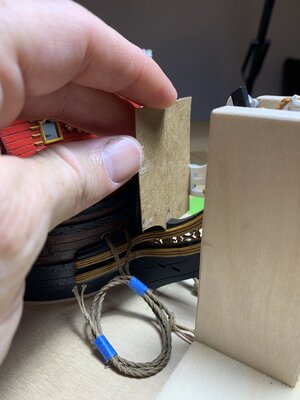
With a centerline drawn on the cardboard, as a visual check against the center of the stem, I found the distance to each headrail, working one side of patterns at a time. I also marked the bottom of the lowest headrail, and just above the midpoint of the middle headrail on each pattern. This enabled me to map the scalloped pattern on the undersides of these supporting timbers (as well as the cambered uppers) so that they ultimately extend out beneath the underside of the lowest headrail.
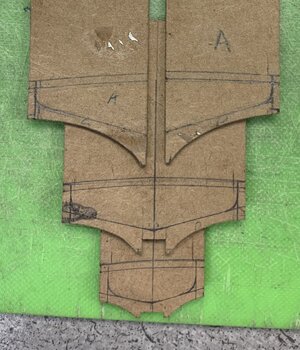
As I first drew the interior scanting of these structures, they were much too heavy and there was no reasonable transition from rising timber to vertical timber. I wish I had taken pictures to show the difference, but I did not. I consulted JCL’s St. Philippe monograph and was rewarded with a much better impression of what these structures should look like. It bears mentioning that they are still oversize, so that I can fair to final shape after lamination.
Keen eyes will observe that one side rises higher (about a 1/16”) than the other. This is one result of the asymmetry that I am referring to. It can’t be fixed; only mitigated. Fortunately, from any viewing angle on the finished model, the combination of gratings camber and consistent alignment with the middle rail on both sides will mask this deficiency. Proof of concept may prove me wrong, but I’m pretty confident that if I weren’t pointing this all out - it would not be obvious to even trained eyes.
For the time being, though, I am pleased that my patterns are glued and ready for wasting:
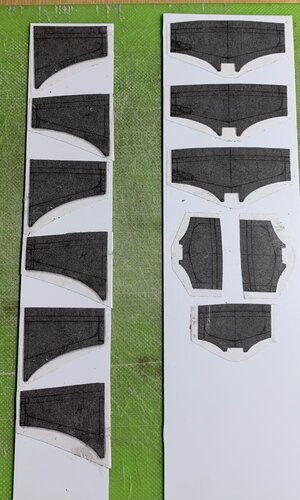
In other works, these fair maidens are rounding into form:
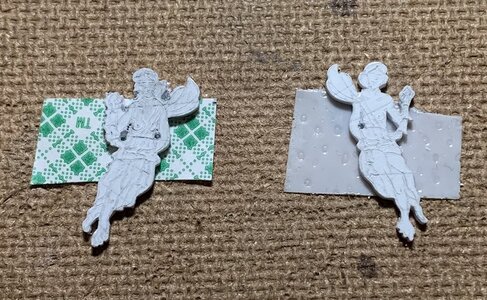
They’ll have to see a podiatrist, but then - don’t we all?
As always, I appreciate the support of everyone who comes to visit this page. Thank you all very much! More to follow.
The method will become clearer in subsequent postings, but the primary challenge - once again - is coping with a similar trapezoidal asymmetry in the bow, as in the stern; the starboard side of the beakhead bulkhead projects further forward than port. Co-incidentally, it is also the starboard side, at the stern, that projects further aft. How the starboard side ended up so considerably longer than port, when the mid-ships ladders were my alignment point of reference - I will never understand.
Anyway, as any good field carpenter must do, this will be about making the installation appear correct and seamless.
A few pictures:

With a centerline drawn on the cardboard, as a visual check against the center of the stem, I found the distance to each headrail, working one side of patterns at a time. I also marked the bottom of the lowest headrail, and just above the midpoint of the middle headrail on each pattern. This enabled me to map the scalloped pattern on the undersides of these supporting timbers (as well as the cambered uppers) so that they ultimately extend out beneath the underside of the lowest headrail.

As I first drew the interior scanting of these structures, they were much too heavy and there was no reasonable transition from rising timber to vertical timber. I wish I had taken pictures to show the difference, but I did not. I consulted JCL’s St. Philippe monograph and was rewarded with a much better impression of what these structures should look like. It bears mentioning that they are still oversize, so that I can fair to final shape after lamination.
Keen eyes will observe that one side rises higher (about a 1/16”) than the other. This is one result of the asymmetry that I am referring to. It can’t be fixed; only mitigated. Fortunately, from any viewing angle on the finished model, the combination of gratings camber and consistent alignment with the middle rail on both sides will mask this deficiency. Proof of concept may prove me wrong, but I’m pretty confident that if I weren’t pointing this all out - it would not be obvious to even trained eyes.
For the time being, though, I am pleased that my patterns are glued and ready for wasting:

In other works, these fair maidens are rounding into form:

They’ll have to see a podiatrist, but then - don’t we all?
As always, I appreciate the support of everyone who comes to visit this page. Thank you all very much! More to follow.
Last edited:


